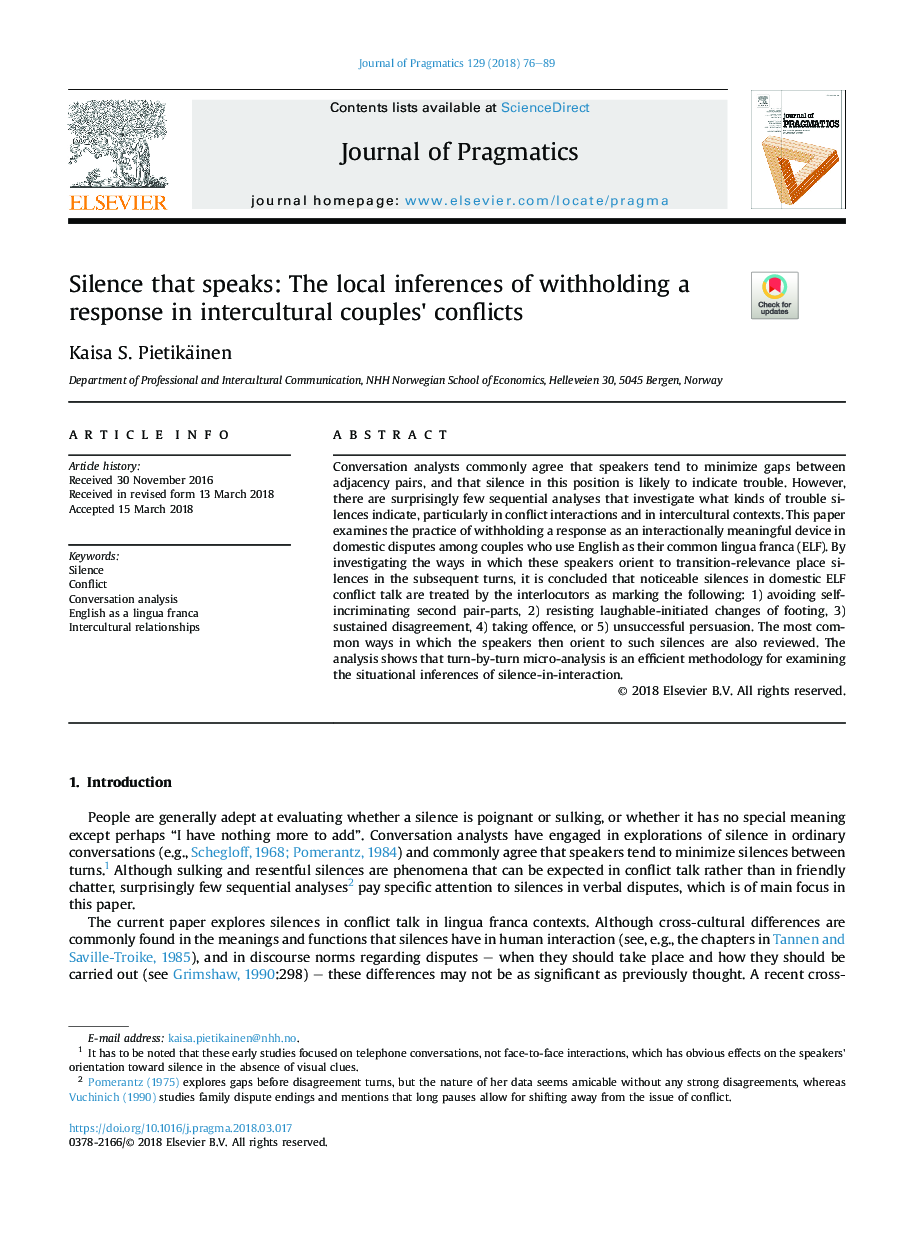| Article ID | Journal | Published Year | Pages | File Type |
|---|---|---|---|---|
| 7297333 | Journal of Pragmatics | 2018 | 14 Pages |
Abstract
Conversation analysts commonly agree that speakers tend to minimize gaps between adjacency pairs, and that silence in this position is likely to indicate trouble. However, there are surprisingly few sequential analyses that investigate what kinds of trouble silences indicate, particularly in conflict interactions and in intercultural contexts. This paper examines the practice of withholding a response as an interactionally meaningful device in domestic disputes among couples who use English as their common lingua franca (ELF). By investigating the ways in which these speakers orient to transition-relevance place silences in the subsequent turns, it is concluded that noticeable silences in domestic ELF conflict talk are treated by the interlocutors as marking the following: 1) avoiding self-incriminating second pair-parts, 2) resisting laughable-initiated changes of footing, 3) sustained disagreement, 4) taking offence, or 5) unsuccessful persuasion. The most common ways in which the speakers then orient to such silences are also reviewed. The analysis shows that turn-by-turn micro-analysis is an efficient methodology for examining the situational inferences of silence-in-interaction.
Related Topics
Social Sciences and Humanities
Arts and Humanities
Language and Linguistics
Authors
Kaisa S. Pietikäinen,
